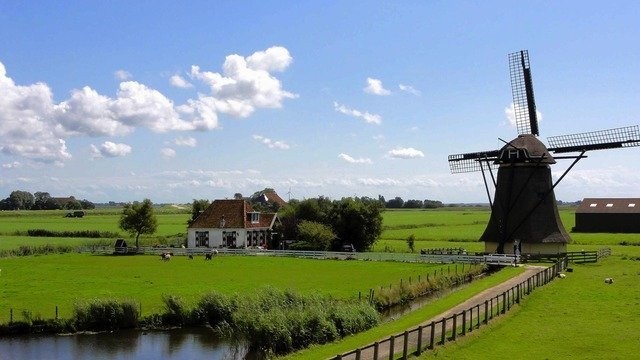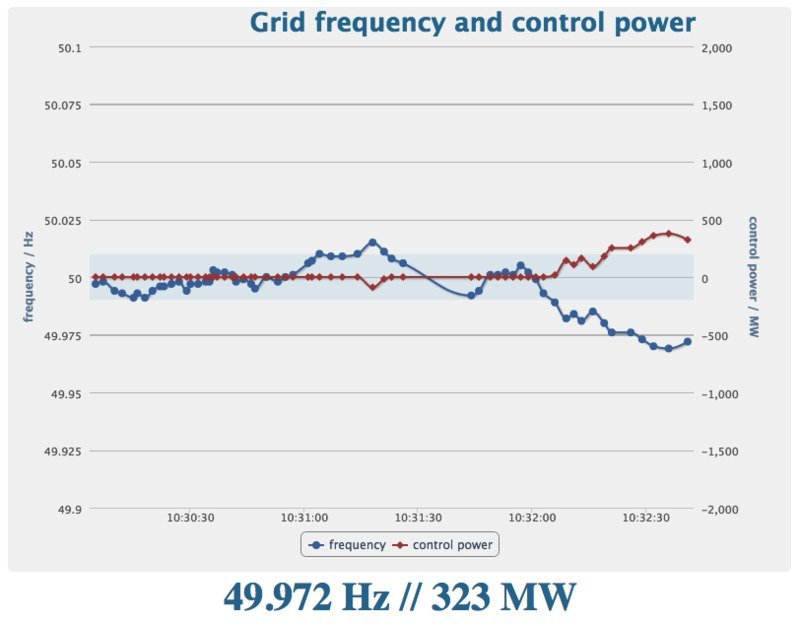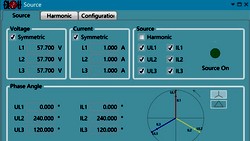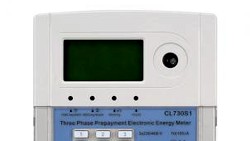The term "power grid frequency" (also known as "grid frequency") describes the rate at which an electrical grid's alternating current (AC) power supply changes the direction. Grid frequency, which is typically represented in Hertz (Hz), is a technical term that refers to the number of times the alternation cycle happens per second. Currently, 50 Hz is the common frequency utilized in the majority of the world's electricity systems. Accordingly, there are either 50 cycles per second, 2,400 cycles per minute, or one cycle every 20 milliseconds (ms).
Some regions are using power grids with a net frequency of 60 Hz, which means that they complete 60 cycles per second. In this article, we use for our considerations IEC regulations with a net frequency of 50 Hz.
Historically, there was no need to control the net frequency, but the principle is the same. If you overload the millstone with grind, the rotation speed slows down. In worst case you damage the mill.

(credit Pexels)
Which useful information does the Grid Frequency provide?
The grid frequency is the indicator for over- or under-generation of electrical power. It's related to the rotation speed of the synchronized generators. If the energy consumption increases, the generators rotate more slowly, and with decreasing consumption, the rotation speed increases. This frequency is controlled within tight limits, typically within ±150 mHz in large networks. The net frequency data in the below graphic are representing a three minutes period in the European power grid. You can find the actual data on netzfrequenz.info (German language).

The blue line indicates the grid frequency, while the red line shows the control power.
What happens when the frequency is too high?
The power plants' feed-in capacity gradually decreases in the case of over-frequency. Coal and nuclear power plants have a control capacity of 3 % to 5 % per minute. As a result, these power plants take some time to adjust to the new load.
More controllable energy sources include gas-fired power plants with 20 % of the nominal production per minute, wind power, and solar systems. Solar systems with a grid frequency of 50.2 Hz formerly had to stop feeding.
But because solar energy is expanding so quickly, this drop would be so severe that a dramatic under-frequency would follow. Due to this, solar systems now start to reduce their feed-in at 50.2 Hz and only completely shut off at 51.5 Hz.
In the meantime, the exceeding energy can be e.g. stored with the help of different media.
What happens in case of under-frequency?
If the frequency has a deviation of minus 10 mHz, means the net frequency is ≤ 49.99 Hz, the primary control power starts to operate. The 10 mHz is the allowed measurement tolerance and comes into place to avoid an eventual control in the wrong direction.
Since deregulation and liberalization of the European electricity markets, the transmission system operators (TSOs) are keeping a volume of about 3 GW for compensation of fluctuations. Based on the rules of ENTSO-E (European Network of Transmission System Operators for Electricity), the German TSOs procure the following types of control power reserve:
- Automatic activation of primary control power within seconds, maximum for 30 seconds
In the graphic above, only the primary control power is used - The secondary Control Power can full ramp up within 5 minutes
- The Minute Reserve can ramp up within 15 minutes
If the frequency is still dropping, the Network Code for Emergency and Restoration (NC ER) comes into effect. In addition to preventing blackouts, the NC ER also aims to stop disruptions from spreading and the system's condition from getting worse. The goal is to quickly and effectively restore electricity if a blackout does occur.
The Network Code for Emergency and Restoration went into effect on December 18, 2017, and by December 2022, an automatic under-frequency control system must be in place and operational around-the-clock.
| Parameter | Values Continental Europe |
|---|---|
| Demand disconnection starting mandatory level: Frequency | 49 Hz |
| Demand disconnection starting mandatory level: Demand to be disconnected | 5 % of the total load (national level) |
| Demand disconnection final mandatory level: Frequency | 48 Hz |
| Demand disconnection final mandatory level: Cumulative Demand to be disconnected | 45 % of the total load (national level) |
| Minimum number of steps to reach the final mandatory level | 6 |
More info: Commission Regulation (EU) 2017/2196 of 24 November 2017 establishing a network code on electricity emergency and restoration
From a frequency below 47.5 Hz are all power plants disconnected from the power grid, and then the network has to be rebuilt. This is the blackout-scenario.
Takeaway
The power grid is stable when the demand is balanced with the power generation. The frequency can be used to determine whether the network is in balance. If it drops below 50 Hz, there is a higher demand than generation.
We in CLOU contribute to the grid stability with our experience and products in terms of data acquisition, metering and energy storage. Talk to our experts, also for micro-grid solutions, or leave a comment.
Thank you for reading and stay safe.
Editor's note: This article was originally published in September 2022 and has been updated for comprehensiveness.





All comments are moderated before being published. Inappropriate or off-topic comments may not be approved.